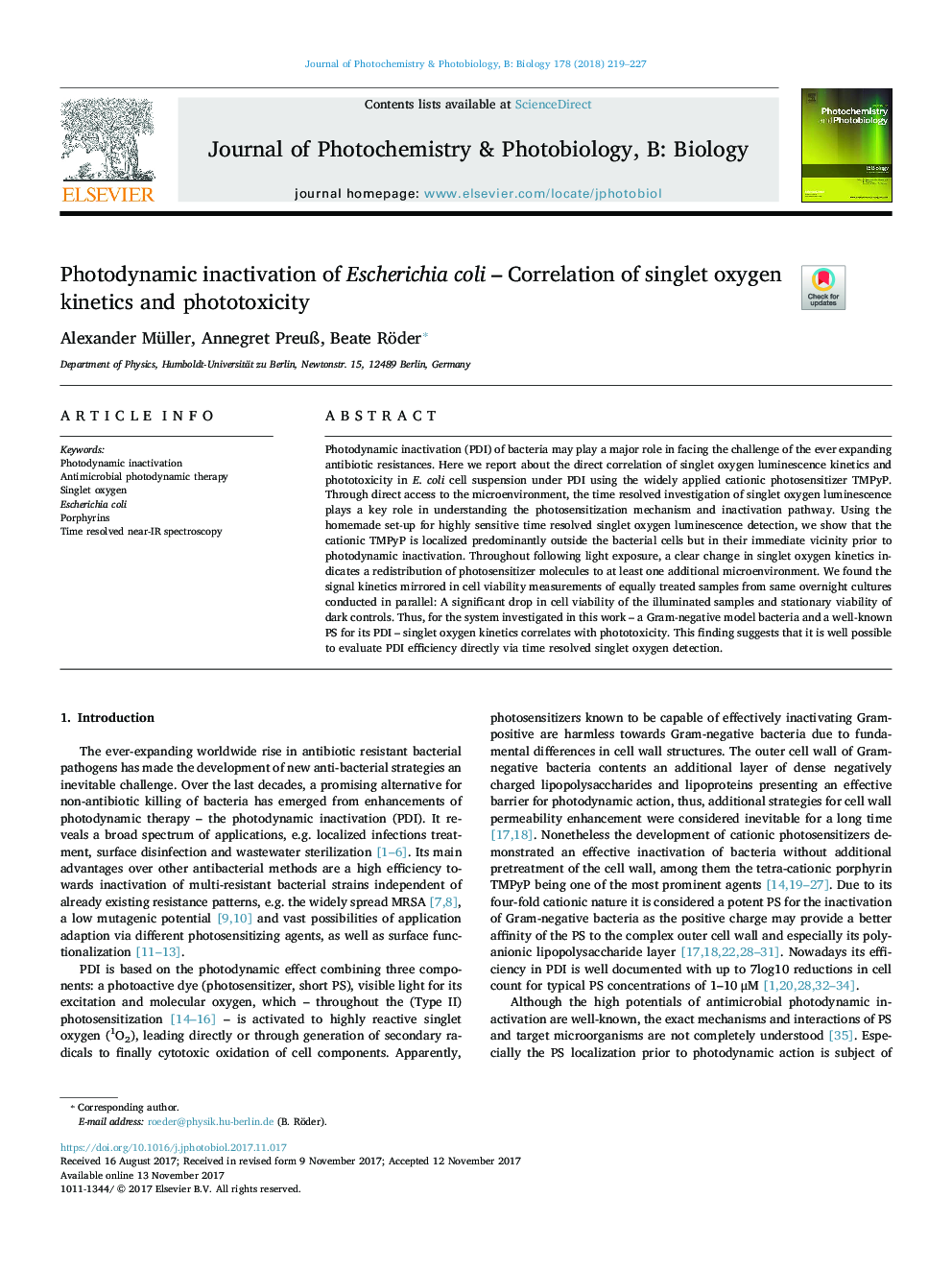| Article ID | Journal | Published Year | Pages | File Type |
|---|---|---|---|---|
| 6493421 | Journal of Photochemistry and Photobiology B: Biology | 2018 | 9 Pages |
Abstract
Photodynamic inactivation (PDI) of bacteria may play a major role in facing the challenge of the ever expanding antibiotic resistances. Here we report about the direct correlation of singlet oxygen luminescence kinetics and phototoxicity in E. coli cell suspension under PDI using the widely applied cationic photosensitizer TMPyP. Through direct access to the microenvironment, the time resolved investigation of singlet oxygen luminescence plays a key role in understanding the photosensitization mechanism and inactivation pathway. Using the homemade set-up for highly sensitive time resolved singlet oxygen luminescence detection, we show that the cationic TMPyP is localized predominantly outside the bacterial cells but in their immediate vicinity prior to photodynamic inactivation. Throughout following light exposure, a clear change in singlet oxygen kinetics indicates a redistribution of photosensitizer molecules to at least one additional microenvironment. We found the signal kinetics mirrored in cell viability measurements of equally treated samples from same overnight cultures conducted in parallel: A significant drop in cell viability of the illuminated samples and stationary viability of dark controls. Thus, for the system investigated in this work - a Gram-negative model bacteria and a well-known PS for its PDI - singlet oxygen kinetics correlates with phototoxicity. This finding suggests that it is well possible to evaluate PDI efficiency directly via time resolved singlet oxygen detection.
Keywords
Related Topics
Physical Sciences and Engineering
Chemical Engineering
Bioengineering
Authors
Alexander Müller, Annegret PreuÃ, Beate Röder,
